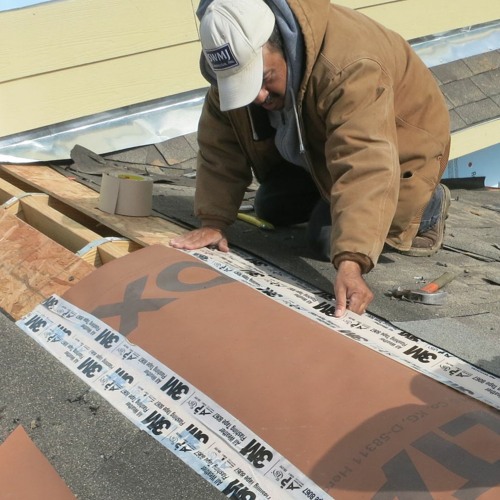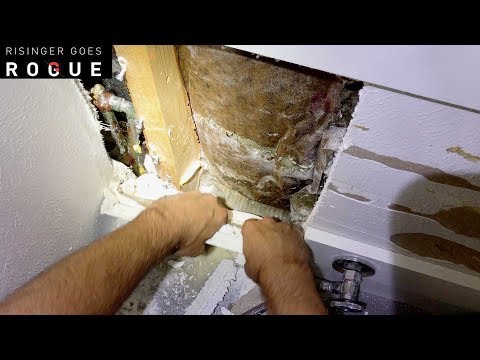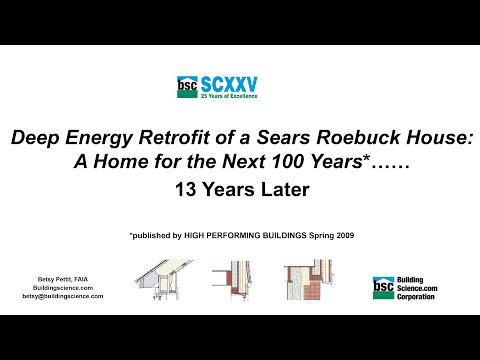Truss uplift happens when the bottom chord of a roof truss moves upward in response to temperature and moisture differences within the attic assembly. The result is screw pops in ceiling drywall and callback headaches. In this excerpt from the Building Science Fundamentals class, Dr. Joe Lstuiburek of buildingscience.com explains how it happens and how to fix it.
Video transcript:
Alright, so we're now in Phoenix, and in Phoenix, it's a flat membrane, flat roof, black EPDM membrane. No ventilation at all, completely filled with insulation. I get a call saying, "Joe, Joe, you got to help us. We've got lots of drywall cracks." I said, "Well, where are you?" They said, "We're in Phoenix."
"When did the cracking start happening?"
"Well, it's been happening for a year."
"What are you doing differently?"
"We're not doing anything differently. We're just doing the same damn thing. We don't understand."
"So there's something different."
Here we are, and I said, "Well, what's the pattern of drywall cracking?" I already knew what was going on. I asked, "Is it happening on the interior partitions or on the exterior walls?"
"Son of a—it's not happening at the outside where the drywall meets the ceilings at the outside. It's only on interior partition walls."
"See, how'd you know?"
"I'm a legend," I said.
He asked, "What's going on?"
"Well, I'm not telling you."
"What do you mean?"
"I need to see just in case I'm wrong."
So off I fly to Phoenix, and we're on this bit of a hill. I'm saying, "Okay, show me the houses where are the houses that have the problem and where are the houses that don't have the problem."
He points, "These over here don't have the problem, and these over here do have the problem."
I said, "You told me you built them exactly the same way."
He says, "Well, we did."
Then I said, "Look more carefully," and he burst out laughing.
Roofing color changes the drying potential of roofs
What happened was that they changed the flat roof membrane from a black membrane to a white membrane. When the membrane was black, the moisture, even in Phoenix in the wintertime—it's not a big winter, but it does get cold—the moisture goes up and accumulates in the plywood and the upper cords of the flat wood trusses. It gets driven down because of the sun, as the membrane is really freaking hot. So, moisture goes up and gets driven down.
When they changed the color of the membrane to a white membrane, the moisture went up but didn't go down. So, what happened to the moisture content of the top cord of the parallel wood cord truss? It increased relative to the moisture content of the bottom cord. If the top cord is at a higher moisture content than the bottom cord, the top cord expands, so the truss bows upward. It's called truss uplift, and the interior partition walls don't move, so you get drywall cracking because the truss goes up.
Moist truss chords can cause truss uplift
We learned about this way back in the 80s in Canada when we retrofitted roofs with blown insulation, and all of a sudden, we had drywall cracking. When the roofs were poorly insulated, the top cord and the bottom cord were relatively warm—they were roughly at the same temperature. When we insulated up the ying-yang, the top cord became very cold. We also ventilated the roof to not have moisture problems, so it got really cold. The trusses would bow upwards, and we learned that we could not attach drywall closer than 12 inches to 18 inches from an interior partition wall. So, we'd put the ceiling drywall up, but the edges of the drywall would not be attached. We would attach them with a drywall clip so that when the truss bowed up, the drywall bent.
The solution to truss uplift is to hide the problem
Truss uplift is not truss uplift if you can't see it—it's called floating corners. So, the biggest innovation that people have forgotten is that as we started heavily insulating our roofs and walls with wood assemblies, we needed to attach the drywall less and also have floating corners in exterior walls. Wood moves, and it really moves differentially—guess what happens when you add insulation and a lot of it?











